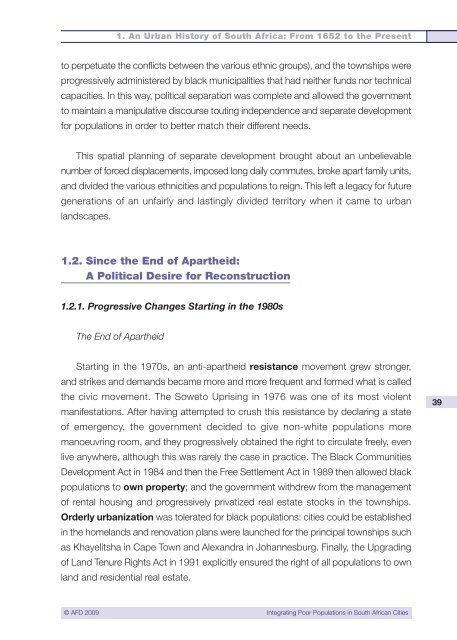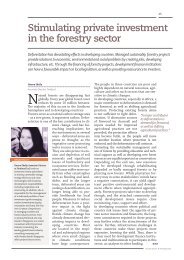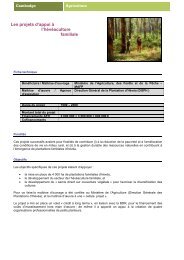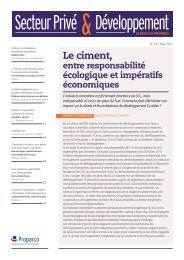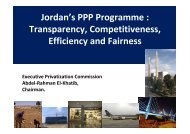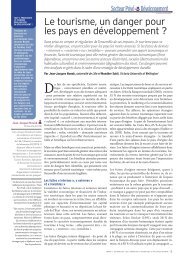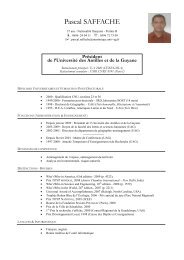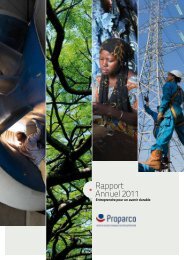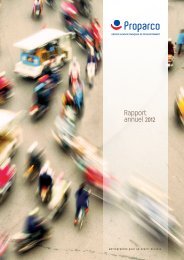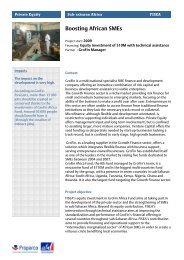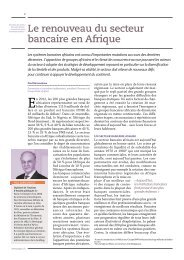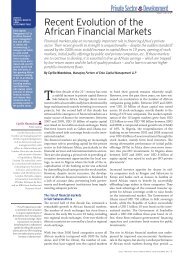Integrating Poor Populations in South African Cities - Agence ...
Integrating Poor Populations in South African Cities - Agence ...
Integrating Poor Populations in South African Cities - Agence ...
Create successful ePaper yourself
Turn your PDF publications into a flip-book with our unique Google optimized e-Paper software.
1. An Urban History of <strong>South</strong> Africa: From 1652 to the Present<br />
to perpetuate the conflicts between the various ethnic groups), and the townships were<br />
progressively adm<strong>in</strong>istered by black municipalities that had neither funds nor technical<br />
capacities. In this way, political separation was complete and allowed the government<br />
to ma<strong>in</strong>ta<strong>in</strong> a manipulative discourse tout<strong>in</strong>g <strong>in</strong>dependence and separate development<br />
for populations <strong>in</strong> order to better match their different needs.<br />
This spatial plann<strong>in</strong>g of separate development brought about an unbelievable<br />
number of forced displacements, imposed long daily commutes, broke apart family units,<br />
and divided the various ethnicities and populations to reign. This left a legacy for future<br />
generations of an unfairly and last<strong>in</strong>gly divided territory when it came to urban<br />
landscapes.<br />
1.2. S<strong>in</strong>ce the End of Apartheid:<br />
A Political Desire for Reconstruction<br />
1.2.1. Progressive Changes Start<strong>in</strong>g <strong>in</strong> the 1980s<br />
The End of Apartheid<br />
Start<strong>in</strong>g <strong>in</strong> the 1970s, an anti-apartheid resistance movement grew stronger,<br />
and strikes and demands became more and more frequent and formed what is called<br />
the civic movement. The Soweto Upris<strong>in</strong>g <strong>in</strong> 1976 was one of its most violent<br />
manifestations. After hav<strong>in</strong>g attempted to crush this resistance by declar<strong>in</strong>g a state<br />
of emergency, the government decided to give non-white populations more<br />
manoeuvr<strong>in</strong>g room, and they progressively obta<strong>in</strong>ed the right to circulate freely, even<br />
live anywhere, although this was rarely the case <strong>in</strong> practice. The Black Communities<br />
Development Act <strong>in</strong> 1984 and then the Free Settlement Act <strong>in</strong> 1989 then allowed black<br />
populations to own property; and the government withdrew from the management<br />
of rental hous<strong>in</strong>g and progressively privatized real estate stocks <strong>in</strong> the townships.<br />
Orderly urbanization was tolerated for black populations: cities could be established<br />
<strong>in</strong> the homelands and renovation plans were launched for the pr<strong>in</strong>cipal townships such<br />
as Khayelitsha <strong>in</strong> Cape Town and Alexandra <strong>in</strong> Johannesburg. F<strong>in</strong>ally, the Upgrad<strong>in</strong>g<br />
of Land Tenure Rights Act <strong>in</strong> 1991 explicitly ensured the right of all populations to own<br />
land and residential real estate.<br />
39<br />
© AFD 2009 <strong>Integrat<strong>in</strong>g</strong> <strong>Poor</strong> <strong>Populations</strong> <strong>in</strong> <strong>South</strong> <strong>African</strong> <strong>Cities</strong>


